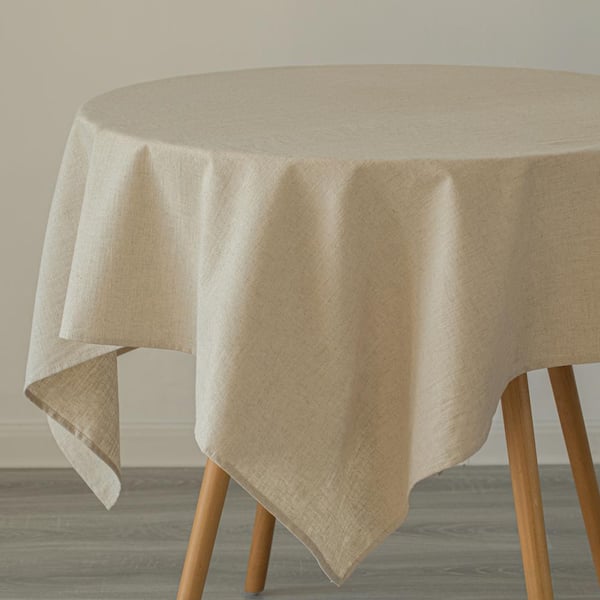Bed Linen Textile Technologies: Discovering Modern Trends and Creative Applications in Layout and Fabric Industry
From lasting production techniques to innovative weaving innovations, the advancement of linen is reshaping the landscape of the textile market. As we delve into the realms of innovative style applications and the appearance of linen blends and crossbreed fabrics, a brand-new chapter unfolds in which bed linen's duty in future textile innovations takes facility stage.
Sustainable Practices in Linen Production
Sustainable practices in bed linen manufacturing have come to be increasingly critical in the fabric market's efforts to reduce environmental impact and promote moral sourcing techniques. Linen, an all-natural fiber acquired from the flax plant, provides a series of benefits such as biodegradability, breathability, and resilience. However, typical approaches of bed linen manufacturing can involve significant water usage, chemical use, and energy-intensive processes.
To address these challenges, lots of fabric makers are embracing lasting techniques throughout the bed linen manufacturing procedure. This consists of sourcing flax from organic ranches that stay clear of dangerous chemicals and chemicals, executing water-efficient retting methods to essence fibers from the flax stalks, and making use of green dyes and finishes. Additionally, some business are spending in renewable resource sources to power their manufacturing centers and decreasing waste via recycling and upcycling efforts.
Technical Improvements in Bed Linen Weaving
With the expanding emphasis on sustainable techniques in linen production, the fabric market is now seeing a rise in technological innovations specifically focused on changing the art of bed linen weaving. These technologies are improving the means bed linen fabrics are produced, providing enhanced efficiency, quality, and imagination in weaving methods.
One of the crucial technological innovations in bed linen weaving is the combination of electronic looms. These innovative looms are furnished with software that allows for intricate and detailed styles to be woven with accuracy. By digitizing the weaving procedure, makers can achieve higher uniformity and precision in their bed linen fabrics.
In addition, advancements in thread spinning modern technology have allowed the manufacturing of finer and even more long lasting linen yarns - table cloths. This causes softer and smoother linen materials that retain their quality even after numerous usages and washes
Furthermore, the development of eco-friendly dyeing processes and surfaces for bed linen textiles is getting traction. These lasting techniques not just reduce the ecological impact but likewise accommodate the raising customer need for fairly created textiles.
Creative Design Applications for Bed Linen
Innovative imaginative techniques are increasingly shaping the imaginative design applications for bed linen in the textile sector. Bed linen's natural visual allure and capability to mix with other textiles make it a preferred selection for producing special garments and accessories that cater to the environmentally mindful consumer.
In addition, designers are try out bed linen in home style, utilizing its durable and breathable nature to craft trendy home furnishings such as curtains, bed linens, and upholstery. The texture and drape of bed linen bring a sense of sophistication and comfort to indoor spaces, adding a touch of style to modern-day homes.

Bed Linen Blends and Hybrid Fabrics

Crossbreed fabrics, on the various other hand, take the principle of blending an action further by incorporating extra elements such as metallic threads, recycled products, or conductive fibers. These ingenious fabrics not just broaden the style possibilities yet additionally present useful facets like conductivity, antimicrobial buildings, or improved toughness. Crossbreed textiles are increasingly being used in various markets, consisting of fashion, interior decoration, and technical fabrics, where the demand for multifunctional materials is on the increase.
Linen's Duty in Future Fabric Innovations

In the realm of future textile technologies, linen is anticipated to be a principal in the growth of sophisticated functional textiles. Researchers and developers are checking out means to boost linen's intrinsic high like it qualities through technical improvements, such as incorporating clever fabrics, nanotechnology, and efficiency surfaces. These technologies intend to raise linen's performance qualities, making it suitable for a wider range of applications, from activewear to safety clothes.
Moreover, the combination of bed linen with various other natural or artificial fibers opens unlimited opportunities for creating unique textiles with special properties and performances. By leveraging bed linen's qualities and discovering ingenious blends, the fabric industry is poised to introduce interesting advancements that cater to evolving customer demands and sustainability needs.
Final Thought
Finally, the exploration of sustainable techniques, technical improvements, creative design applications, linen blends, and its role in future textile technologies look at this now highlight the continual advancement of bed linen textile in the modern-day layout and fabric market. With a focus on development and creative thinking, the versatility and environment-friendly nature of bed linen make it a beneficial product for suppliers and designers alike, leading the way for additional developments and advancements in the field of textiles.
As we delve right into the worlds of imaginative style applications and the appearance of linen blends and hybrid materials, a new chapter unravels in which bed linen's duty in future fabric technologies takes center stage.
Checking out the fusion of bed linen with other materials has led to the introduction of ingenious blends and hybrid fabrics in the contemporary textile industry. Bed linen blends offer a distinct combination of the features of linen with those of other fibers, resulting in fabrics that possess boosted properties such as boosted longevity, enhanced draping, and reduced wrinkling.The development of bed linen blends and crossbreed fabrics has actually set the stage for Linen to play a crucial role in driving future textile developments.In the realm of future textile innovations, bed linen is expected to be an essential gamer in the growth of sophisticated practical textiles.